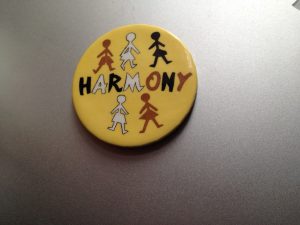Wot. No google Search in 1972?! How did people find information about multiracial issues in those days?
Applying to adopt a little brother. Sam says “the same colour as me”.
27/11/2013Rest in Peace Nelson Mandela
15/12/2013When we adopted baby Sam in 1972 there was no Google Search. I don’t think anybody had personal computers. I remember hearing about enormous computers that were kept in really large office areas, with specially controlled environments and temperature. I imagined they looked like this
How did we find out about multiracial issues? The answer is with difficulty. Doubtless there were academic papers in the universities but we didn’t see any. There were libraries of course and some information was available there.
The first thing we read that was useful for white adopters of black and mixed race children, was in 1973 – one year after we had adopted Sam. It was the transcript of a talk given to social workers by a member of a Canadian organisation. The organisation was called The Open Door Society. The speaker was Margaret Edgar. She was both a social worker and adoptive mother of six children of different racial backgrounds. To their credit, it was our adoption society that sent us the transcript.
Margaret Edgar’s talk was based on research carried out in Canada, where they had pioneered adoption of hard-to-place black and mixed race children. She says that naturally the most satisfactory arrangement is for loving black parents to adopt these children, but sometimes this is not possible. Her whole talk is beautifully constructed.
The main thrust that came through to us was that ‘Love is not enough… Society will see your children as black… She said “There must be a realisation, that when a baby is adopted trans-racially, the normal requirements of love, under-standing and concern for physical welfare are not enough. The parents have a responsibility to instil in their child, through the media of literature, art and music, a pride and understanding of his racial heritage.”
We acted on her strategy straight away. Unfortunately I cannot quote the whole article. It is very long.
In the 1980s we discovered a great organisation called Harmony and there we met other parents of black and mixed race children. We shared information about skin and hair care, about multicultural books and many wonderful things about black culture. Our families met up for picnics and events and we all benefitted – the children and parents alike.
Recently, I found an article on Google Search. It was an article written in the United States about Margaret Edgar in the picturesquely – to our English ears – (yet accurately) named Tuscaloosa News July 3rd 1973. It says more or less what the talk said, but in a more dramatic way. All copies of the newspaper are on-line.
“Think Black, Parents Advised…This does not mean that the white family has to give up its white identity”, Mrs. Edgar explained. “Instead it should develop an additional one:…..After all, black people have always had dual identities”, she noted.
I would maintain that much of what is said in this article has value today.
Who would have thought in 1973 that this article could be accessed forty years later on a small home laptop computer in a house in London in 2013?







1 Comment
Great to see another installment of the blog! Love the content and visuals. Looking forward to the next one!